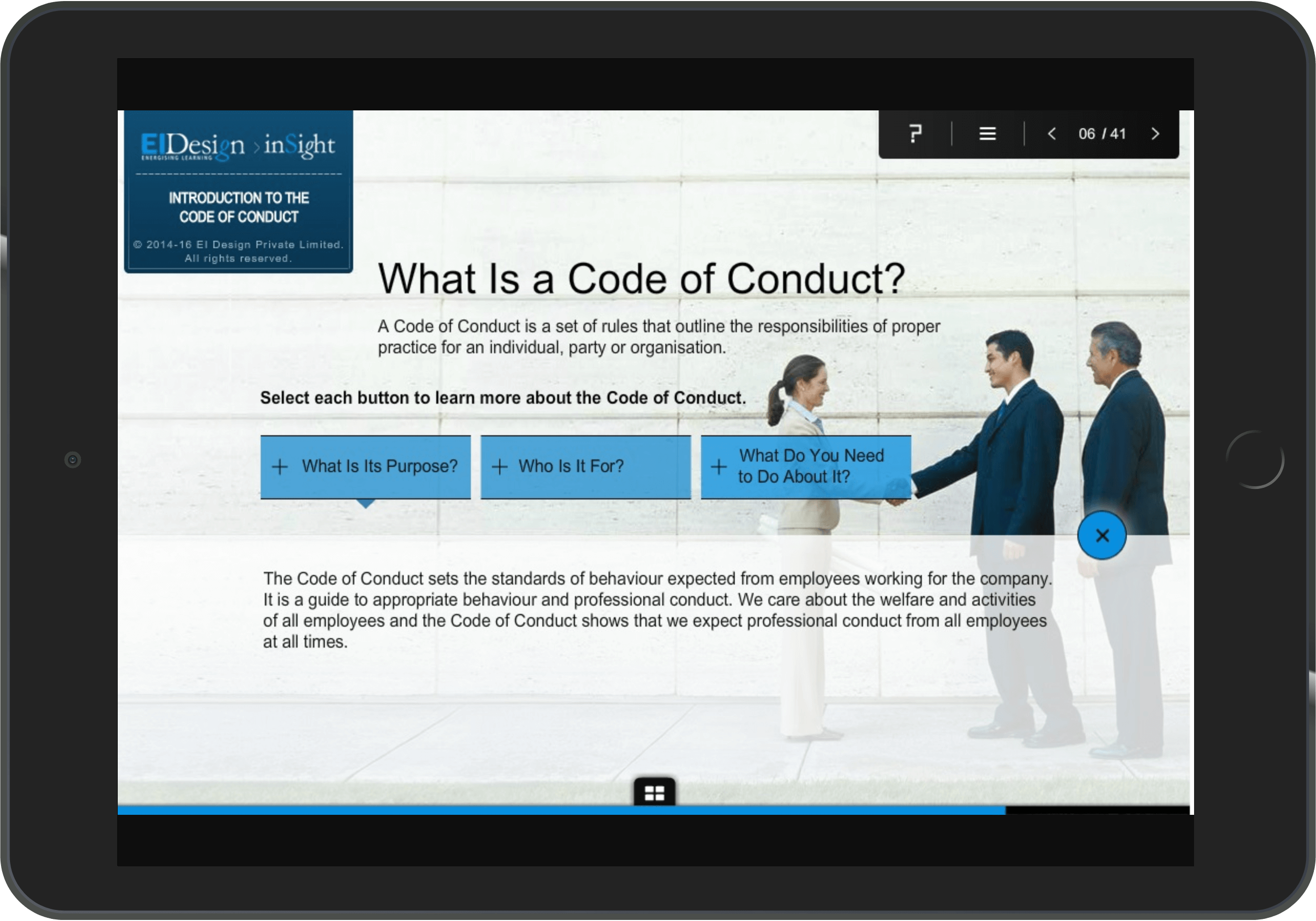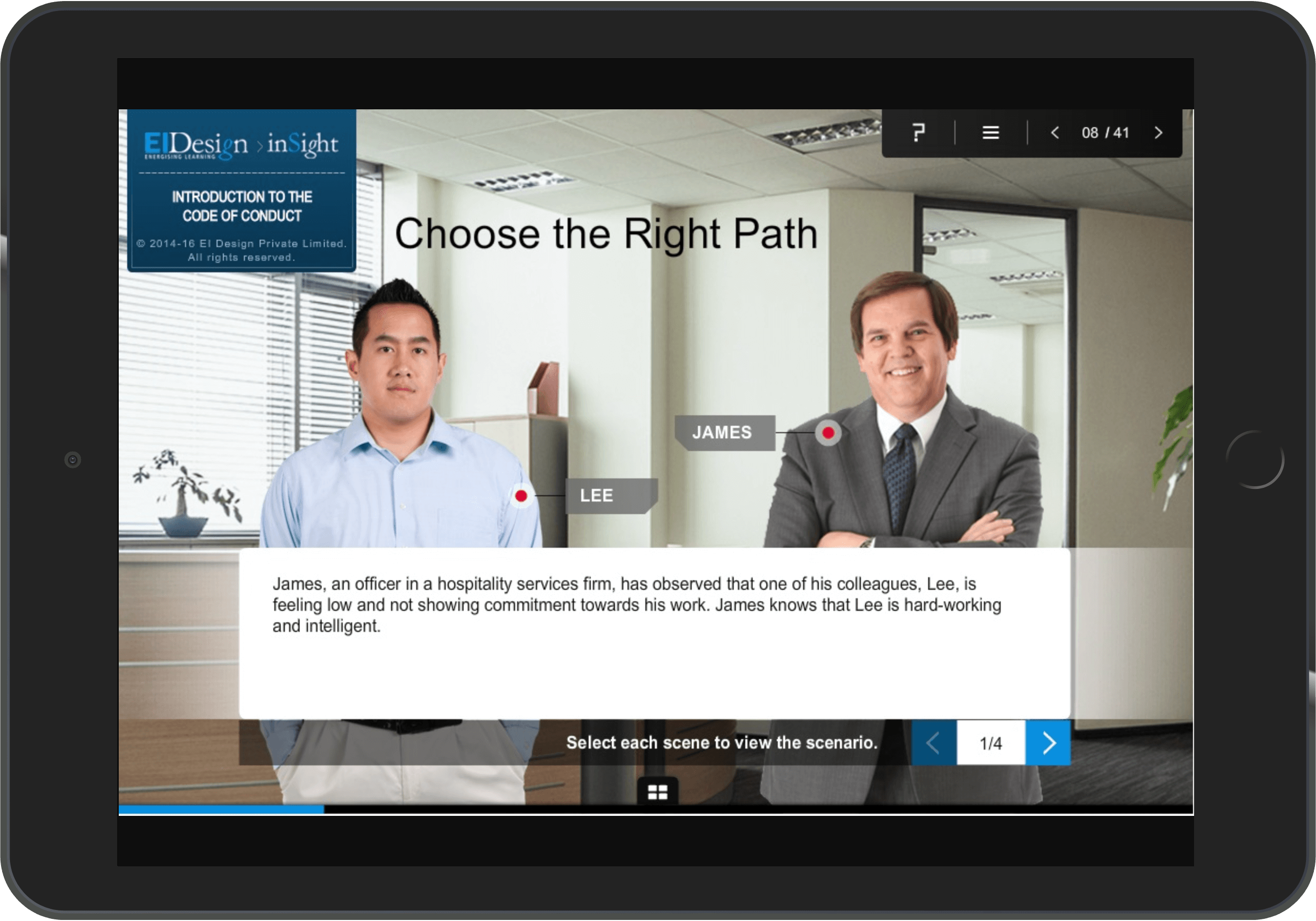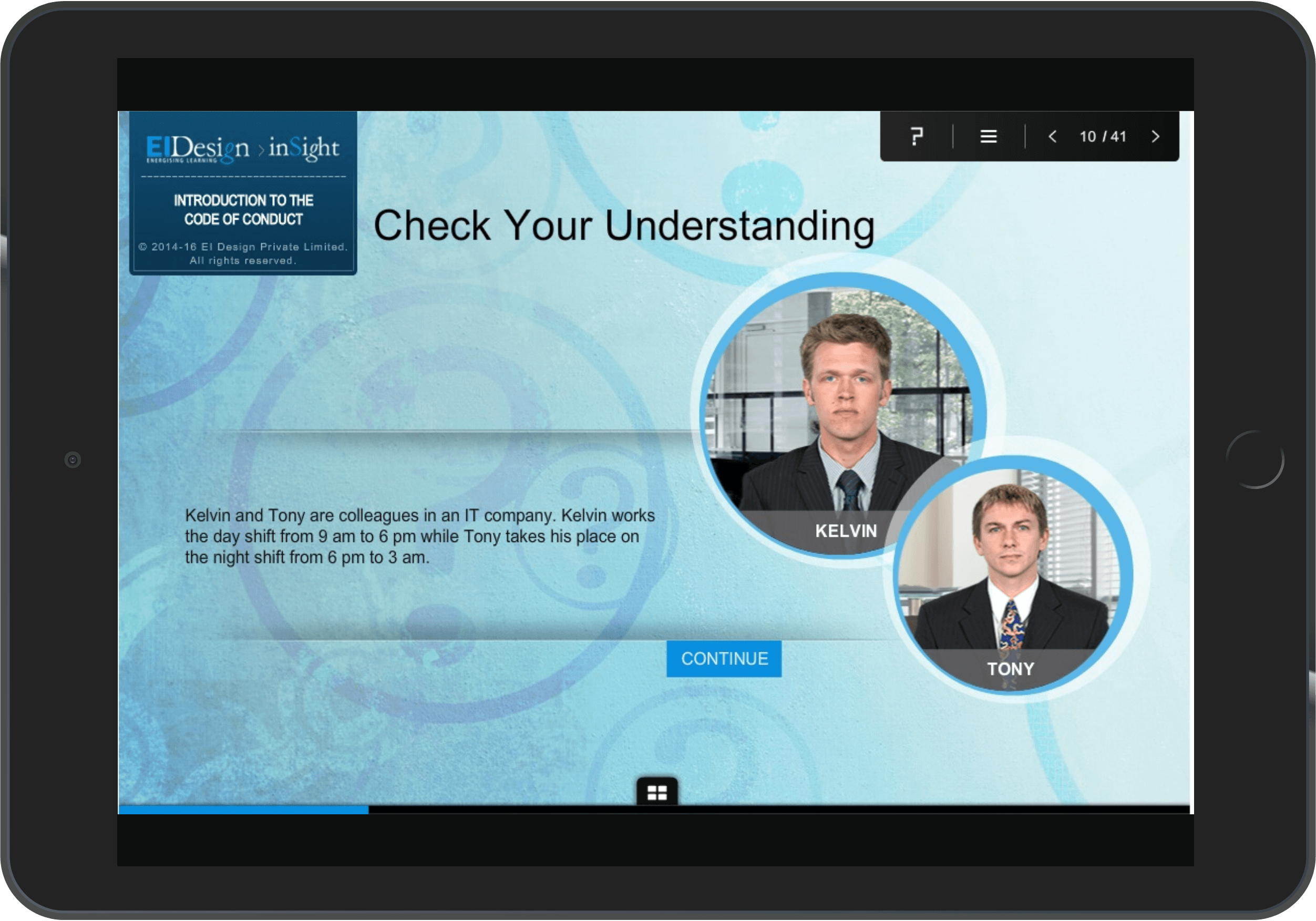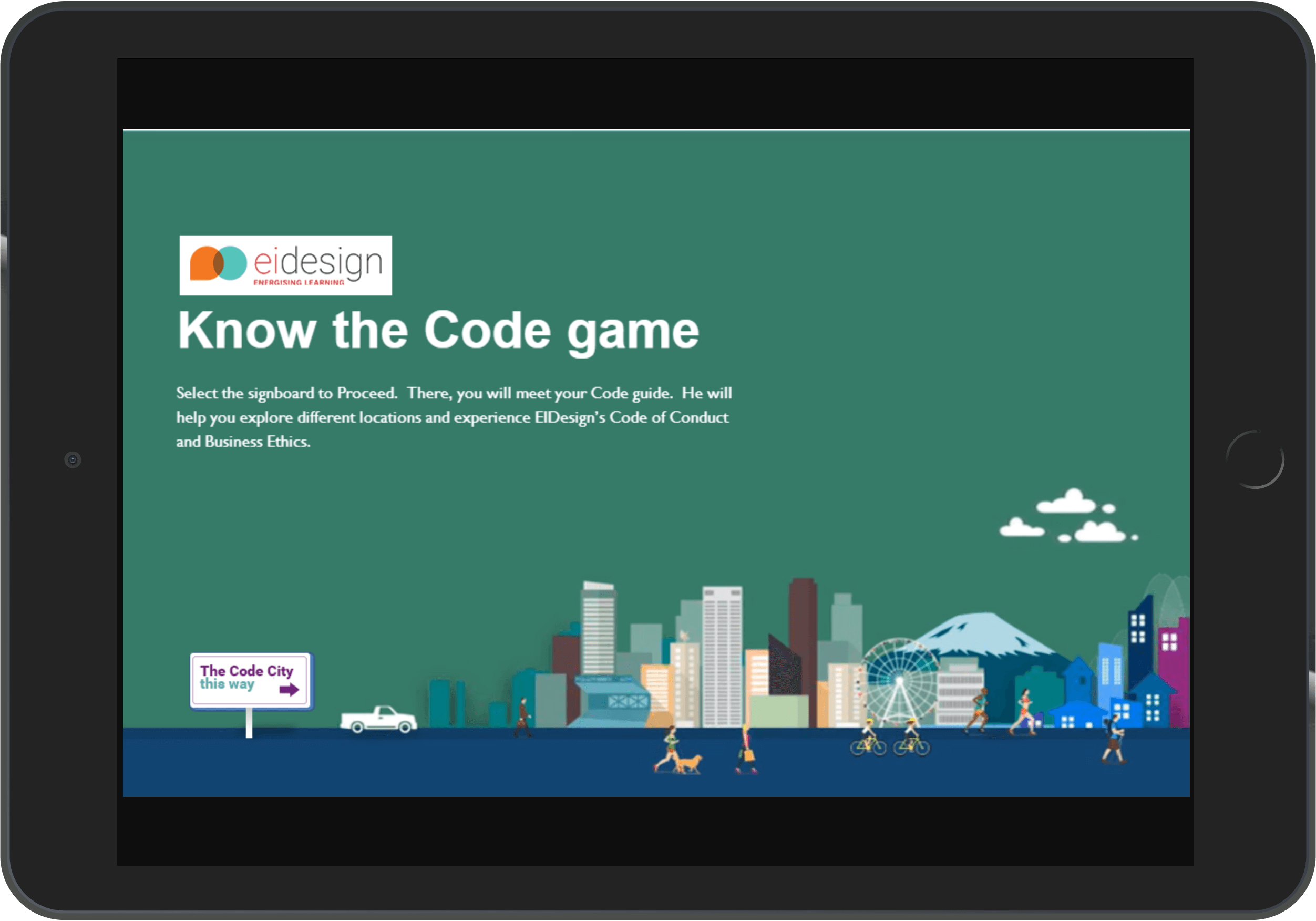
Creating Highly Engaging Corporate Compliance Training With Gamification: A Case Study
We are fully aware of the significance of compliance training. It is vital that employees conform so that organizations, in turn, meet the stipulated conformance to rules and guidelines that are enforced by regulatory bodies or governments.
Online compliance training has been helping organizations manage the required conformance for over two decades now. Specifically,
- The online training enables organizations to roll-out programs with the required frequency and ensures that employees complete the program within the stipulated time.
- It is equally easy to get an online attestation of successful training completion in this mode of delivery.
Yet, online compliance training often tends to be rather predictable (in other words, boring). It comes as no surprise that learners rarely find it engaging.
As an extension, organizations rarely see the desired impact (required conformance and behavioral change).
Sure enough, the training gets completed, with the attestation by learners no less, but does it really succeed in instilling the spirit of ‘why comply’ and eventually see the required behavioral change? Not really.
However, this need not be the case.
In this article, I share a corporate compliance training case study featuring the code of conduct in its more traditional avatar followed by its gamified variant. You will see how gamification creates a far more engaging and immersive learning experience while making this learning more sticky.
Before sharing the case study, I want to highlight why employees get disengaged from compliance programs. These cues are vital and need to be offset by alternative learning strategies (like gamification).
Why Do Employees Dread Compliance Programs Although They Do Understand The Significance Of These Programs For The Organization?
As I see it, there are 3 key reasons:
- There is no ‘motivation’ for learners. They end up taking them because they ‘need to‘.
- On top of this, most compliance training programs use approaches that are predictable (page-turners featuring scenarios and a quiz) that do not quite engage the learners.
- They also tend to have a preachy or prescriptive approach that most adult learners do not like.
What Else Can Be Done To Create Engaging Compliance Courses?
Over the last 16 years, we have been servicing the online compliance training needs of our customers. We generate a high volume of compliance courses every year.
The Difference?
We offer learner-consulting services for creating effective online compliance training that:
- Increases learner awareness and interest (through teasers before the program).
- Steps up the learner engagement quotient.
- Creates memorable and sticky learning experiences.
- Uses strategies like gamification to create an immersive learning experience.
- Provides reinforcement through Performance Support Tools (post the completion of formal training) leading to the right action when learners face decisions on the job.
Impact: Organizations see a wider acceptance of ‘why comply,’ and more learners are likely to opt for the desired action when faced with a real-life challenge or dilemma.
Corporate Compliance Training Case Study (Code Of Conduct)
Now, I showcase a case study on corporate compliance training that uses the same content (code of conduct) but through 2 different strategies:
- Approach 1: Scenario-based learning
- Approach 2: Gamified learning
Background
The course focuses on:
- The key aspects of the code of conduct, and the reasons behind its creation.
- The effective ways to apply the different principles of the code in a workplace.
- The different scenarios when a good conduct is at a risk or compromised.
- The effective method to help avoid risking the company or individual and choosing the right conduct path.
Approach 1: Scenario-Based Learning
Even though this variant does follow a more traditional approach featuring scenario-based learning, we brought in a few changes to make it relevant and engaging for the learners.
Setting The Context
Instead of sharing the “do’s and don’ts” that are often part of a compliance program on the code of conduct, we began by highlighting why it does exist and why compliance is beneficial for them, as well as the organization. This approach holds the learner’s interest.

Usage Of Scenario-Based Learning
The following 2 formats were used to present the scenarios:
Learners were presented real-life situations and had to proceed through the course and “choose the right path“. The objective was to help learners analyze and be ready to use the learning in the workplace.

After the learning is completed, a quick check-point was provided to the learner. This helps check the recall/understand level cognition.

Impact: As a result, we saw better engagement and were also able to establish the gain the organization needed to see.
Approach 2: Gamified Learning
With the same content, we created an interesting gamified path. While the learning path, learning takeaways, and the overall program remain unchanged, the module progression provides an interesting learning journey (unlike the typical online compliance training).

Visual Menu
The aspects of the code of conduct are represented with different locations of an organization. The learner must complete the learning of one location to get into the next location (maps to the topic-level outcomes in the previous approach).

Gamification Approach
There are 6 locations that the learner needs to explore to successfully certify to commitments and complete the game. Each location has a quiz at the end. Correct answers will give the learner points and a passport stamp which will allow them to move to the next level.
Impact: As you will note, the usage of creative Instructional Design approach can infuse a different level of engagement and create a much higher stickiness of learning in a compliance course.
I hope this article provides you with cues that you can use to create highly engaging online corporate compliance training. While this case study features usage of gamification, we offer several other engaging techniques.
If you want cues on how you can use Gamification to create highly engaging online corporate compliance trainings or have any specific requirement or query, schedule a call with our learning consultants or you can write to me directly at apandey@eidesign.net.
Read More:
- Tips And Examples To Create Highly Engaging Online Compliance Training
- 5 Tips To Encourage Employees To Comply With Compliance Training
- How To Create Engaging Compliance Courses Using Gamification And Microlearning
- Compliance Simplified: Using Creative Instructional Design Approaches
- Free eBook: Tips and Examples to Create Highly Engaging Online Compliance Training



